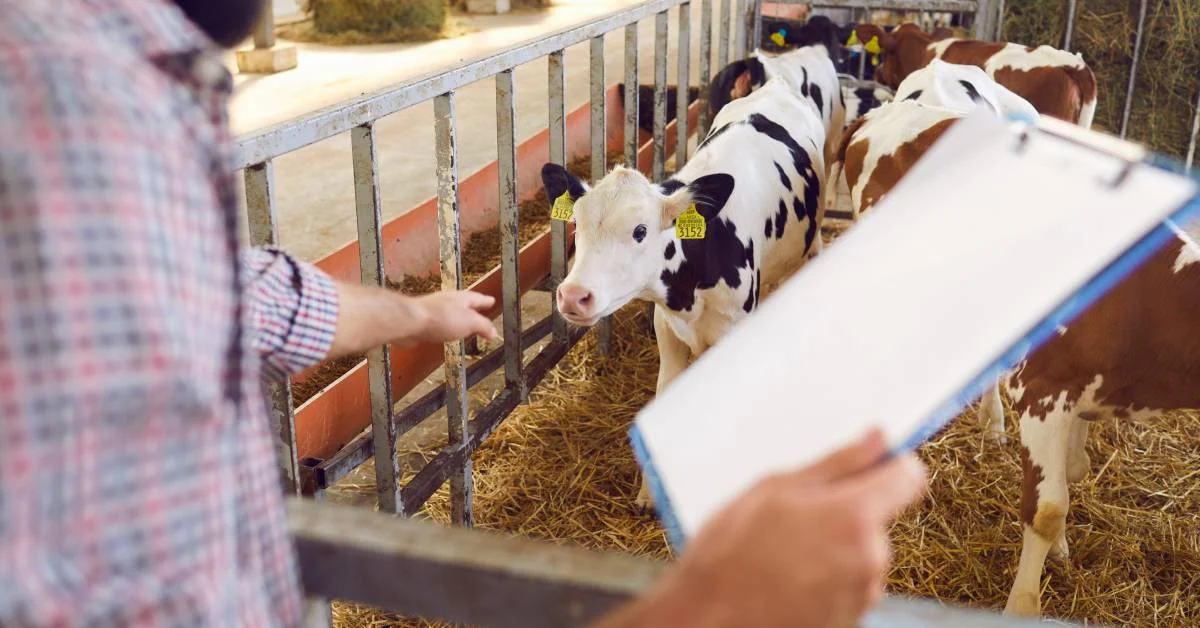Introduction:
Every January, it’s time to review and prepare for the most important season in a spring-calving cow operation. As the calving season approaches, an increased understanding of the parturition process, particularly the stages of calving, is helpful. The more we comprehend the physiology of the process, the more likely we are to make sound decisions about providing assistance. Parturition, or “calving,” is generally considered to occur in three stages:
First Stage: Dilation of the Cervix
In the initial cow calving stages, it often goes unnoticed despite its significance. During this phase, subtle behavioral changes like isolation or discomfort might be observed. As this stage progresses, distinct shifts in behavior, including tail elevation, tail switching, and an increase in mucous discharge, might become evident.
Furthermore, the softening of the pelvic ligaments near the pin bones may lead to a conspicuous “sunken” appearance on either side of the tailhead. Prior to attempting forced calf extraction, ensuring complete cervical dilation is imperative.
These types of stages of calving revolve around the dilation of the cervix, one of the pivotal stages of calving. In its natural state, the cervix remains tightly closed until the dissolution of the cervical plug. Approximately 2 to 24 hours before the culmination of parturition (typically ranging from 2 to 6 hours), cervical dilation begins to occur.
During this period, the inhibitory effects of the “progesterone block” wane, allowing uterine muscles to become more sensitive to factors that amplify contraction rate and strength. Initially, these contractile forces predominantly impact cervical relaxation, while uterine muscular activity remains relatively subdued.
Even though the first stage often passes by without much notice, subtle behavioral adjustments like isolation or discomfort could serve as indicators. As this stage nears its end, pronounced alterations like tail elevation, tail switching, and heightened mucous discharge may become apparent.
Ensuring complete cervical dilation before attempting to forcibly extract the calf is a crucial step within the management of these particular cow calving stages.
Second Stage: Delivery of the Calf
The second stage of the calving process is defined as the delivery of the newborn. It begins with the entrance of the membranes and fetus into the pelvic canal and ends with the completed birth of the calf. So the second stage, which is a crucial part of the calving process, is the one in which we are particularly interested. This is where we find all of the action.
Clinically, and from a practical aspect, we would define the beginning of stage 2 of the calving process as the appearance of membranes or water bags at the vulva. The traditional texts, fact sheets, magazines, and other publications that we read state that stage 2 lasts from 2 to 5 hours in the stages of calving.
However, data from Oklahoma State University (Putnam, et al. 1985) and the USDA experiment station at Miles City, Montana (Doornbos, et al, 1984) would indicate that the second stage of the is MUCH shorter. In these studies, assistance was given if stage two progressed for more than two hours after the appearance of the water bag at the vulva.
The interesting thing about the data was that the heifers undergoing the calving process unassisted completed it in about one hour after the initiation of stage two, and mature cows calves within an average of 22 minutes of the initiation of stage two. Those that took longer needed assistance.
These and other data would indicate that the normal second stage in the stages of calving would be redefined as approximately 60 minutes for heifers and 30 minutes for adult cows. In heifers, not only is the pelvic opening smaller, but also the soft tissue has never been expanded.
Older cows, in the calving process, have had deliveries before, and birth should go quite rapidly unless there is some abnormality such as a very large calf, a calf positioned backward, leg back, or twins. If the cow or heifer is making good progress with each strain, allow her to continue the process on her own. Know your limitations.
Seek professional veterinary help soon if you encounter a problem during the calving process that cannot be solved easily in minutes.
3rd Stage: Delivery of the Placenta
During the stages of calving, the third stage involves the shedding of the placenta or fetal membranes. Typically occurring within 8 to 12 hours in cattle, this phase is crucial. If the membranes remain after 12 hours, they are considered retained. In the past, manual removal of the attachments, referred to as “unbuttoning,” was common practice.
However, research has shown this approach can harm uterine health and future conception rates. To prevent infection and facilitate placental shedding in 4 to 7 days, antibiotics are often administered. If dealing with retained placenta, consulting a veterinarian is recommended for proper management.
Breeding & Production Management Using Cattlytics:
Our all-in-one cattle management app for livestock record keeping empowers you to plan, manage, track, sell, and report, all from a single convenient location.
Optimize Your Cattle Production and Performance Management:
Effortlessly handle all your cattle production and performance tasks using our user-friendly cattle management software. It assists cattle users with:
- Cattle breeding management.
- Cattle production management.
- Cattle calving management.
- Cattle yearling performance management.
- Cattle weaning performance management.
Live Cattle Tracking in Real-Time:
You can manage your cattle farm now without using spreadsheets. This app is specifically built for ranchers to manage their cattle activities. You can manage:
- Manage cattle health.
- Monitor your cattle movement.
- Track breeding & reproduction.
Efficiently Monitor and Plan Cattle Health Management:
Now you no need to worry about keeping up with your cattle’s meds and treatment. Because Cattlytics app got you covered. It makes taking care of your cattle’s health and performance in real-time and easy. Grab Cattlytics now and stay on top of things by spotting health trends early.
Conclusion:
Understanding the stages of calving is crucial for ensuring the well-being of your herd. These stages involve cervical dilation, calf delivery, and placental shedding. The timely management of each phase ensures healthy outcomes. Leveraging tools like the Cattlytics app streamlines cattle management, enhancing breeding, production, and health monitoring for your herd’s success.
FAQs:
How long a calving cycle lasts?
Ideally, a cow should give birth every 80 days after calving and then become pregnant again for next year’s calf. This way, the cow is anticipated to uphold an average calving interval of 365 days.
How do you calculate calving?
The projected calving date is determined by adding the gestation period of the recipient to the breeding date, and then subtracting 7 days to accommodate for the time the embryo was in the donor.
How many times can a cow give birth?
According to a local dairy farmer, cows enjoy a few months of maternity leave before calving. Typically, cows give birth every 12-14 months. Given that the average lifespan of U.S. dairy cows is 4-6 years, they usually have 2-4 calves during their lifetime.








